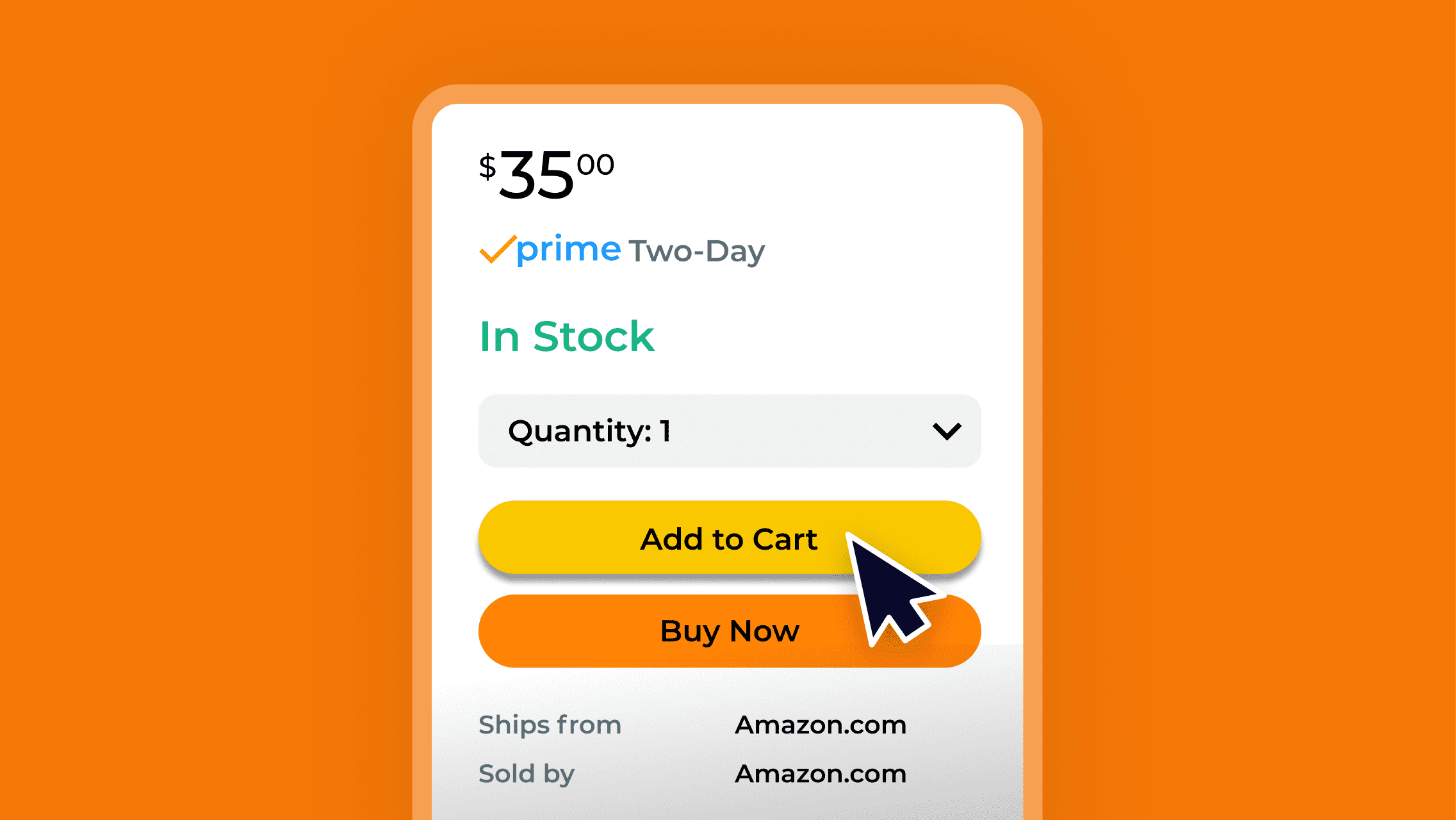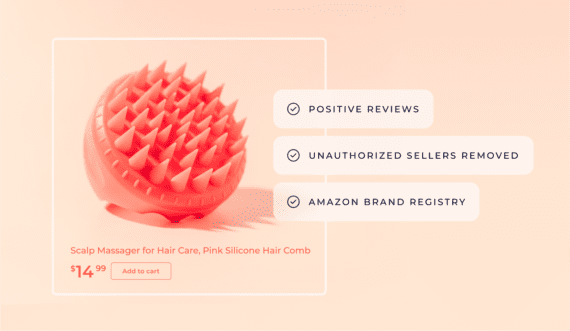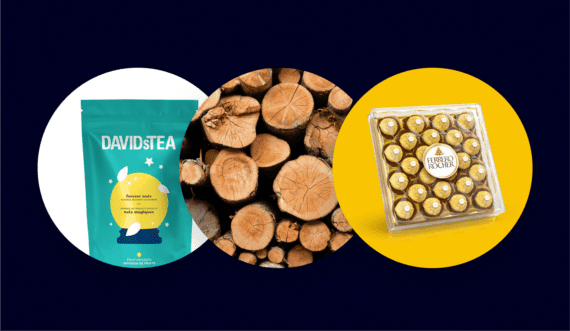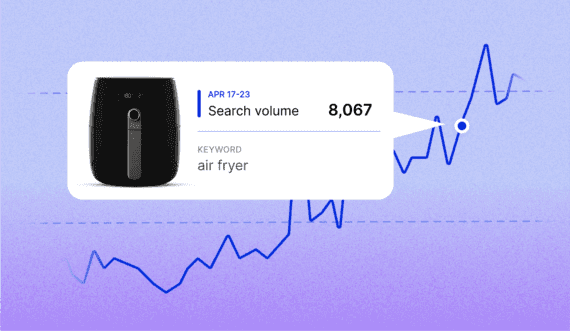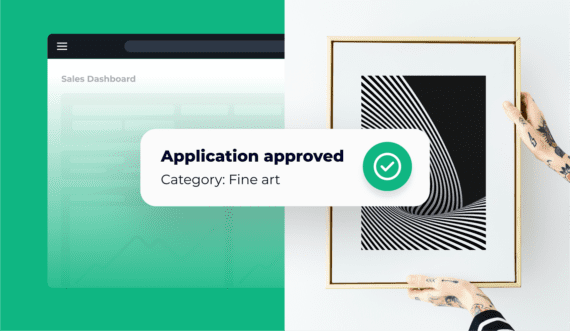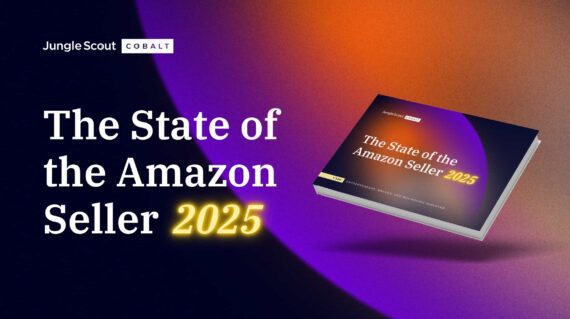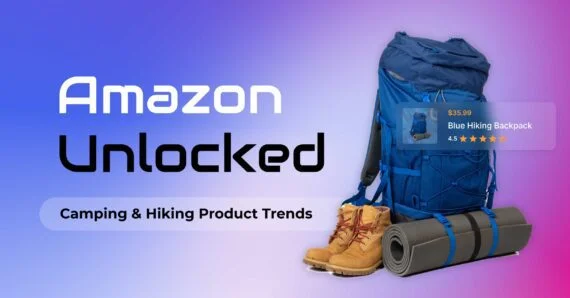Amazon is responsible for over a third of all online retail sales, and the majority of all sales on Amazon happen through its Buy Box. If your product offer is not in the Buy Box, it becomes more difficult for a customer to make a purchase.
What is the Amazon Buy Box?
The Amazon Buy Box refers to the section on a product detail page where customers make a purchase. It is the box located on the right-hand side of the listing where customers can directly add items to their shopping carts. The Buy Box includes the price, shipping details, seller and fulfillment method, and “Add to Cart” and “Buy Now” buttons.
Some products on Amazon have multiple sellers — meaning each of those sellers will be competing for the Buy Box. As you can see in the image above, the seller is “Jungle Creations.” Since we’re the only seller of this product, only Jungle Creations will be in the Buy Box.
If there are multiple sellers on one Amazon listing, Amazon will rotate the Buy Box between each seller. However, in order to ‘win’ the Buy Box, you need to meet a few criteria. We’ll go over that more below.
Why is the Buy Box important for Amazon sellers?
The Buy Box is crucial for sellers on Amazon because it significantly affects sales. The majority of purchases on Amazon are made through the Buy Box rather than other purchasing options on the page.
1. Owning the Buy Box increases your chances of making a sale.
Nearly all Amazon purchases are made through the Buy Box, as it is the first ‘call to action’ shoppers see.
However, even though the Buy Box gives information on who is selling and fulfilling the product, it’s unlikely that these factor into a customer’s decision to buy.
The convenience of the Buy Box’s placement is often enough to generate a sale.
2. If you own the Buy Box, you can create Amazon PPC ads.
Amazon PPC (pay-per-click) allows sellers to bid on prices of clicks for certain keywords, and sellers who control the Buy Box can create sponsored listings for the product through Amazon PPC.
But, if you do not own the Buy Box — even if it is on your own listing — you can’t create ads for the product.
However, not all sellers have access to the Buy Box. Amazon’s algorithm determines which seller’s offer appears in the Buy Box based on various factors such as price, shipping options, seller performance metrics, and inventory availability.
Sellers with competitive prices, high seller ratings, and fast shipping times are more likely to win the Buy Box for a particular product.
How to become eligible for the Amazon Buy Box
In order for a seller to be eligible for the Buy Box, they must have a Professional Seller Account. Individual sellers are not eligible for the Buy Box. Also, the seller’s Account Health must remain in good standing.
Typically, a healthy account is one that has good customer service performance, follows Amazon’s product policy compliance, and has excellent shipping performance.
To check your Account Health, log on to your Seller Central account, and click on Performance > Account Health.
How do I know if my products are eligible for the Buy Box?
If you’re unsure about your control over the Buy Box for a certain listing, Amazon offers two free tools that let you check your eligibility.
In Seller Central, go to Inventory > Manage Inventory. On your product listings, you will see the column “Featured Offer eligible.”
If the column doesn’t appear, click on the Preferences button above your products on the right.
Another way to check Buy Box eligibility is by going to the top of your Seller Central page to the search bar and typing “Buy Box,” the Help window slides out from the right.
Immediately, it offers a tool that allows you to check Buy Box availability.
How to win the Buy Box on Amazon
Even if you meet the minimum requirements for Buy Box eligibility, you still may not “win” or “control” the Buy Box right away — especially if there are other sellers on the same listing.
And though Amazon doesn’t explicitly state the factors its algorithm considers when assigning the Buy Box to sellers, these are the suspected considerations in order of importance:
1. Product condition
If you are selling used products, such as books, Amazon will typically display the offer that is in better condition. For example, Like New vs. Poor. If there are both new and used offers on a listing, they’ll typically have a separate Buy Box.
2. Offer competitive pricing
Amazon equates low prices with happy customers. If your offer is the lowest price, you increase your chances of winning the Buy Box. It’s worth noting that often the Buy Box price is the lowest possible price for a given product. Sellers can use a repricing tool or manually reprice their products to have a better chance of winning the Buy Box.
3. List as a Prime seller
Although a non-Prime seller can qualify to win the Buy Box, Amazon gives priority to its Prime sellers. Sellers who use Fulfillment by Amazon (FBA) automatically qualify for Prime, though merchants who fulfill their own products can also qualify for Prime.
4. Keep strong inventory levels
If you offer a product but are low in stock, your sales may not reach certain customers in time. Therefore, Amazon may give the Buy Box to sellers with a large inventory.
5. Maintain positive seller feedback and account metrics
Although it isn’t entirely clear how Amazon’s algorithm weighs seller feedback when awarding its Buy Box, it is assumed that sellers with poor performance metrics have less of a chance of winning the Buy Box than those with positive metrics. Make sure to respond to customers in a timely manner and ship products on time if you fulfill via FBM.
Does every product on Amazon have a Buy Box?
No. While most products a shopper sees on Amazon will have a Buy Box, there are a few instances in which a product listing may have a suppressed Buy Box.
For example, if the only seller (or sellers) offering a product on Amazon does not qualify for the Buy Box, the Buy Box will not appear.
Also, the Buy Box may not appear if all of the sellers on the listing have listed their versions of the product at a price that is much higher (or lower) than the average sales price for the product.
Does Amazon always win the Buy Box?
What if Amazon is on a listing with other sellers? Do they always win the Buy Box? Usually, yes.
But this is not because they’ve given themselves an unfair advantage. Often, Amazon will offer its own products at the lowest possible prices, thus, winning the Buy Box by the same rules as every other seller.
In the rare instances where Amazon doesn’t offer the lowest possible price, they, too, may lose the Buy Box.
Ways to lose the Buy Box on Amazon
While it’s important to understand what it takes to win the Buy Box, it’s also important to understand that you can lose the Buy Box, too.
There are a few ways this can happen.
1. Another seller joins your listing
If another seller joins your listing and lists the product at a lower price, they can win the Buy Box.
In some cases, this is referred to as ‘hijacking,’ especially if the listing was a private label product of your own creation. By setting their price lower than yours, Amazon’s algorithm awards the new seller the Buy Box.
2. Your price is too high or too low
If your price is too high or too low in comparison to the average price, you might lose the Buy Box, even if you’re the only seller on the listing.
This prevents sellers from offering their product at a significantly reduced starting price in order to garner early sales and reviews, and then increasing the price once the product gains visibility.
Tip: If you plan to launch a product at a lower price than what you anticipate selling it at in the future, consider using Amazon’s coupons and promotions to reduce the price for the consumer instead of manually adjusting the product price. This will protect you from losing your own Buy Box.
3. Your account health takes a dip
Finally, if your Account Health falls below certain thresholds, Amazon may also remove your Buy Box privileges.
Furthermore, if your seller privileges are suspended or one of your ASINs is suppressed, you will lose the Buy Box.
What happens if I lose the Buy Box?
Again, if you sell on a product listing with other sellers, such as a wholesale or arbitrage product, you will not own the Buy Box 100% of the time. In the times you don’t, your offer will appear in the “Other Sellers on Amazon” section of a listing.
Customers can still purchase from your offer, but it won’t be as prominent as when it is listed in the Buy Box.
How can I know whether or not I’m winning the Buy Box?
In addition to checking eligibility for your Buy Box products, Amazon offers insights into how often you’re winning the Buy Box as well.
When you first log on to Seller Central, at the top of the Dashboard and just below the menu, there are a few metrics.
There you will see a metric that lets you see your 2-day and 30-day Buy Box (Featured Offer) percentage. You can view more information about your Buy Box and pricing history by clicking on the percentage.
How to automate pricing to increase Buy Box wins
Of course, tracking the Buy Box all the time can be difficult. After all, Amazon’s customers are viewing your product listings 24/7.
Fortunately, there are a few ways to automate the process to ensure that you control the Buy Box.
Amazon’s Automate Pricing tool
First, Amazon has an “Automate Pricing” tool that reprices your products automatically if and when they differ from the current Buy Box price—ie, another seller lists the product for less than your offer.
To access the ‘Automate Pricing’ tool go to your Seller Central and click Pricing > Automate Pricing.
, First, choose the type of pricing rule you wish to enact and give it a name.
The name can be anything you want, as long as it helps you remember the purpose of the new pricing rule.
There are five types of pricing rules you can choose from.
- Competitive Featured Offer. This rule changes the price of your offer above, at, or below the current Buy Box offer. This is useful when there are multiple offers on the same product listing.
- Competitive Lowest Price. If you want to offer the lowest possible price, you can set a rule to price your offer below the other listings, regardless of their Buy Box status.
- Competitive External Price. You can set your offer to reprice based on non-Amazon prices. However, this may cause you to lose the Buy Box if your price is a lot higher than the current Buy Box price.
- Based on sales units. If you wish to reduce the price for a certain number of units, you can create a rule for that. This is useful for liquidating your excess products or short-term sales promotions.
- Price synchronization. Business sellers have multiple tiers for their listings. If you wish to have the prices for all your tiers adjusted in relation to the standard price for your business product listing, use this rule.
After you’ve chosen your rule type, select the marketplaces in which you wish to use the rule.
Finally, set the parameters for your listing.
The specifics of your parameters will depend on the type of rule you choose.
In the above image, I chose ‘Competitive Buy Box’ as my rule. From there, Amazon asks me:
- Which pricing action I want to take;
- The type of offers I want to compare on Amazon;
- Whether or not I want to compare my prices to off-Amazon offers;
- And whether or not I want to continue repricing if I update my price elsewhere in Seller Central (such as Inventory Manager).
Jungle Scout Alerts
The next way to stay on top of your products’ Buy Box ownership is with Jungle Scout’s Alerts feature.
To access Alerts, log in to Jungle Scout. Once you are logged in, click the bell icon at the top of your dashboard.
Next, click ‘Alerts Settings’ in the top right corner, which should allow you to see your ‘Alert Settings’ dashboard.
Once you’ve created alerts for your Jungle Scout account, you will receive daily notifications on your Jungle Scout Alerts Dashboard.
Optionally, you can also have notifications sent to your email.
By setting the price and Buy Box settings in your Alerts, you can keep track of when your status as the Buy Box seller changes.
Are you winning the Buy Box?
Do you have any other tips on how to win the Buy Box, or how to avoid losing it? If yes, please share them in the comments below. We’d love to hear from you!
Win the Amazon Buy Box.
Leverage Jungle Scout’s suite of Amazon intelligence tools to gain a competitive edge and grow your Amazon business.
Brian Connolly is an Amazon seller, ecommerce expert, and writer for Jungle Scout. He lives in the New Jersey Shore area with his wife and cat. When he isn’t writing advice online for aspiring and experienced Amazon sellers for Jungle Scout, he spends his free time boating, fishing, and selling boating-themed items on his Amazon business.

